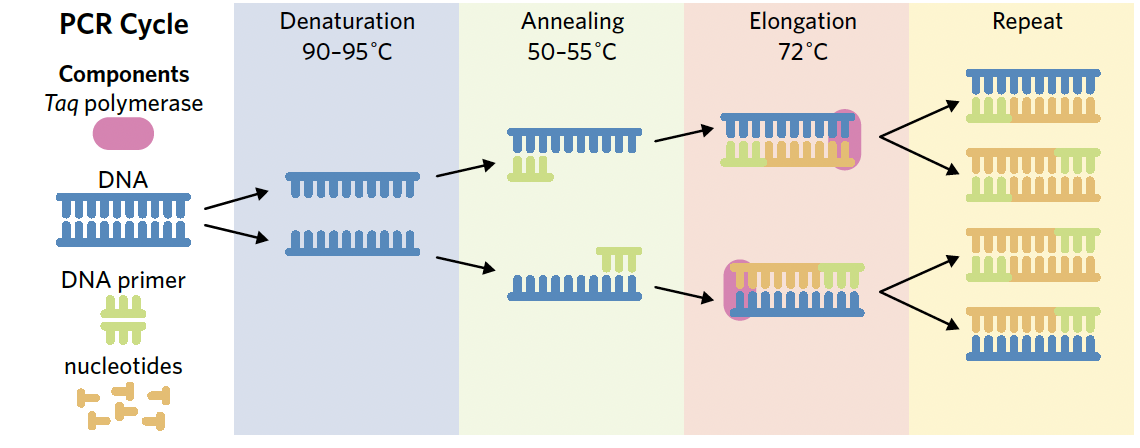the polymerase chain reaction and gel elctrophoresis
1/6
There's no tags or description
Looks like no tags are added yet.
Name | Mastery | Learn | Test | Matching | Spaced |
|---|
No study sessions yet.
7 Terms
what is polymerase chain reaction and its purpose
the polymerase chain reaction amplifies a sample of DNA by creating additional copies.
amplifies DNA by making multiple identical copies. Used when there is an insufficient amount of DNA
focuses on primers or restriction endonucleases
after each cycle the amount of DNA present is doubled
step by step process of pcr
denaturation - DNA is heated to approx 90-95 to break the hydrogen bonds between the bases and seperate the strands, forming single stranded DNA
annealing - the single strand DNA is cooled to approx. 50-55 to allow the primers to bind to the complementary sequences on the single stranded DNA
elongation - the DNA is heated to 72 which allows taq polymerase to work optimally. Taq polymerase binds to the primer which acts as a starting point and begins synthesising a new complementary strand of DNA
repeat - the cycle is repeated multiple times for more copies of DNA

forward primer
the forward primer will bind to the start codon at the 3’ end of the template strand. This causes taq polymerase to synthesis a new DNA strand in the same direction that RNA polymerase would function
the reverse primer
the reverse primer which will bind to the stop codon at the 3’ end of the coding strand. this causes taq polymeraseto synthesis a new DNA strand in the reverse direction that RNA polymerase would function
what is gel electrophereisis
gel electro is a technique that allows you to measure the size of DNA fragments. It seperates DNA fragments based on its molecular size.
application of pcr and gel electrophersis
polymerase chain reaction and gel electrophoresis can be used in genetic testing and DNA profiling
DNA profiling
we can compare DNA samples from a crime scene to DNA of suspects
we can amplify DNA samples using pcr until there is a large amount of testable material
DNA profiling can also discover how releated two people are. Mainly ised in parental testing when the identity of one parent is unknow.
gel elctrophoresis is used